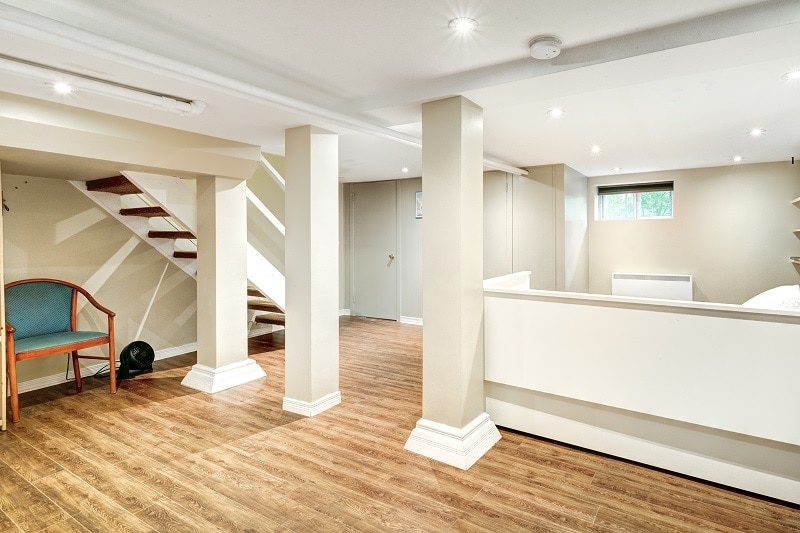Why Is My Basement So Cold: 4 Possible Reasons
-
Pete Ortiz
- Last updated:

Basements are entirely or partially below ground level, an aspect that makes them vulnerable to being chillier than the rooms upstairs. Warm air is lighter than cold air, meaning warm air goes up while cool air goes down. The main scientific reason behind cold basements is that cold air settles at the lowest level of the house.
Let’s look at other reasons why the difference in air temperature is quite apparent when entering your basement. We will also discuss ways to address your frigid basement woes, especially during the cold months.
The 4 Main Reasons for a Cold Basement
1. Lack of Solar Heat
Basements don’t receive as much solar heat as the main floor rooms. This, coupled with the fact that hot air rises, makes the ground structure prone to having cooler air, even if it is finished with vents, ductwork, and proper insulation. A single zone heating system can only worsen the problem because it doesn’t give you complete control of where the conditioned air goes.

- A multi-zone heating system can address the concern and help maintain comfortable temperatures in the ground and above-ground rooms. The system has several temperature sensors, thermostats, and dampers, allowing you to individually control the temperatures in different rooms. You can switch up the heat if your basement is too chilly.
2. Thermostat Location
Standard programmable thermostats only monitor the temperatures within the room where they are installed. The thermostat will pick that your home is warm, even though your basement is several degrees colder. If you have a larger home and only one heating system, there are clever ways to make your basement as warm as your upper floor rooms.
- Thanks to its wireless temperature sensors, a smart thermostat can protect your basement from being overly chilly. The sensors allow effective monitoring of the temperatures in all rooms, including the crawlspace and basement. Generally, they make it easier to ensure the heating system evens the temperature across your home.
3. Moisture
Your basement could feel colder than upstairs rooms because of too much humidity in the air. You may even notice a damp, musty odor even if there are no signs of moisture on the floor, ceiling or walls.
Hydrostatic pressure can be a real problem in a basement because the ground around your house has water. Once it accumulates, it will exert pressure against your basement walls, causing moisture problems.

- The surest way to address basement moisture issues is first to prevent hydrostatic pressure buildup. To do so, start by improving your drainage and basement waterproofing. It would help if you also sealed cracks on the walls or floor. Finally, address excess humidity concerns by installing a top-quality dehumidifier.
4. Slower Seasonal Temperature Adjustment
Above-ground rooms adjust to the seasonal temperature in less than an hour. Below-ground structures take longer because dirt is an excellent insulator. It can take a month or two months for your basement to warm up, even in the summer.
- Investing in multiple heating systems can help make your basement temperatures more comfortable. Consider installing a cozy fireplace to make your finished basement more visually appealing and functional. It would be best if you also considered installing a radiator or under-floor heating.
Conclusion
Spending time in a basement is not fun, especially if the space is downright chilly. Fortunately, there are solutions for some of the significant reasons why basements tend to be cold. As you implement these solutions, don’t forget to enhance the visual aspects of your basement. Add textured rugs, cozy furniture, and throw pillows to give the space a warm feel.
Featured Image Credit: Anatoli Igolkin, Shutterstock
Contents


